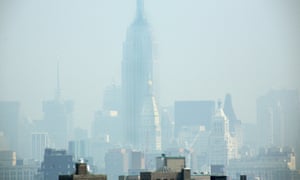Paris climate talks: what you need to know
Leaders from nearly 200 countries are meeting in Paris in December for the United Nation's Climate Change Conference to try and agree on a climate treaty, discuss how we can keep global warming below two degrees.
The centrepiece of the Turnbull government's climate policy will deliver only about one-seventh of Australia's post-2020 carbon reduction goals, according to analysis by The Climate Institute.
The $2.55 billion Emission Reduction Fund (ERF) – which may swell to almost $5 billion by 2030 – will likely deliver about 355 million tonnes of carbon abatement, based on the price paid in the fund's first auction, the group said in a report.
| Malcolm Turnbull has maintained the climate goals of predecessor Tony Abbott. Photo: Luis Ascui |
After the second auction results were released on Thursday, The Climate Institute updated its calculations based on a lower price per tonne of $12.25. The ERF budget would account for 377 million tonnes, or about 15 per cent of Australia's total abatement, based on the average price of $13.12 over the two auctions.
Prime Minister Malcolm Turnbull has maintained the climate goals of his predecessor Tony Abbott. These project a 5 per cent fall in Australia's 2000 emissions by 2020 and about 19 per cent out to 2030.
Based on government projections, the goals imply Australia will need to cut emissions by a cumulative total between 2015 and 2030 of 2.5 billion tonnes – or about seven times the ERF's likely abatement, The Climate Institute said.
| The Turnbull government's main climate policy covers just one-seventh of pledged emission cuts, the Climate Institute says. Photo: Fairfax Media |
With the second auction paying out $557 million, the total spending now exceeds $1.21 billion. As with the first auction, most of the projects - totaling about 93 million tonnes of carbon - involve land sector projects, such tree planting, savannah burning or carbon farming.
Environment Minister Greg Hunt said in April the first auction "clearly prove[s] that the Coalition's climate change policy is delivering real and significant abatement – just as we always said it would".
A spokesman for Mr Hunt said there is "no doubt that the ERF is incredibly effective".
Wind turbines in California: The Climate Institute said Australia's post-2020 targets should be much higher if nations are to keep global warming to within 2 degrees of pre-industrial limits.
| Wind turbines in California: The Climate Institute said Australia's post-2020 targets should be much higher if nations are to keep global warming to within 2 degrees of pre-industrial limits. |
"We welcome the fact that the Climate Institute – an organisation that for a long time has been highly critical of the ERF and a supporter of a carbon tax/emissions trading system – is now finally beginning to acknowledge some of the 'important strengths' of the [fund]," the spokesman said.
Temperatures rise
The Climate Institute said Australia's post-2020 targets should be much higher if nations are to keep global warming to within 2 degrees of pre-industrial limits.
The UK's Met Office said on Monday that the mean global temperature in the first nine months of 2015 was 1.02 degrees above the 1850-1900 average – passing the symbolic 1-degree milestone for the first time.
"We've probably got 1.5 degrees [of warming] locked in," John Connor, chairman of the Climate Institute, said.
A fairer target for Australia would be to aim for 4.7 billion tonnes of abatement by 2030, of which the ERF would deliver just 7.5 per cent, the Climate Institute said.
The current target may itself be hard to keep because the government is relying on payments to polluters or those storing carbon with little restraint on the rest of the economy to curb emissions, Mr Connor said: "We are not sending a broad-based signal to emitters in the economy that they have to take responsibility".
Emissions 'going the wrong way'
Mark Butler, the Opposition spokesman for climate change, said Direct Action would probably perform even worse than The Climate Institute predicts.
Almost three-quarters of the first auction went to existing projects, some as much as 10 years old, Mr Butler said, citing the Clean Energy Regulator.
"They were simply handing over money to projects that were already in the system, and were already delivering abatement that had been counted," Mr Butler said.
"Every piece of analysis I've seen says that Direct Action will not even constrain emissions, let alone reduce them," he said. "Emissions are actually going the wrong way."
Greens deputy leader Larissa Waters said weak baseline rules meant most big polluters would find ways to increase emissions without penalty.
"The so-called safeguard mechanism, which is meant to cap pollution, is set so high that it is meaningless – it is only safeguarding the Liberal party's big mining donors," Senator Waters said.
The Climate Institute report said Direct Action had its uses but only "as a buttress not a pillar" of climate action. Other policies could include allowing companies to trade pollution permits between them – effectively setting up a carbon price – as well as stricter vehicle fuel efficiency standards.
The Greens have legislation before parliament to raise car standards "so there is no need for the delay to 2017 for the government to merely consider this – these standards can be implemented immediately", Senator Waters said.



